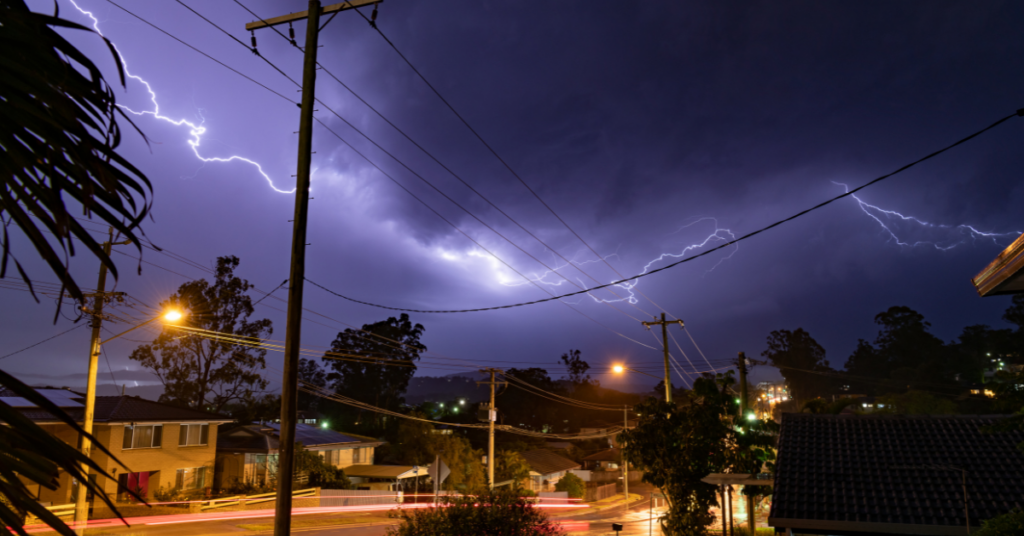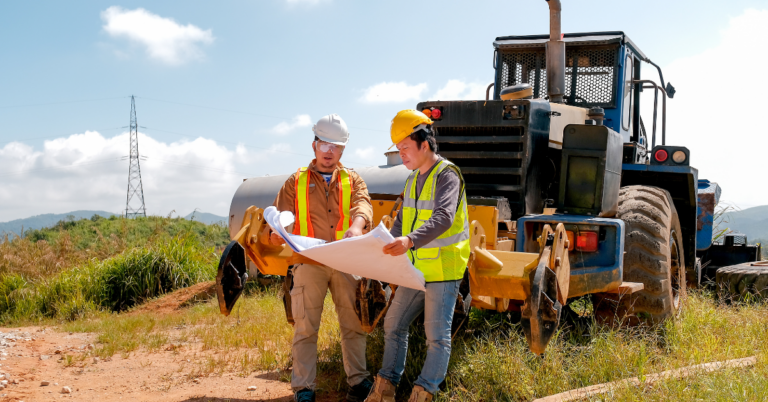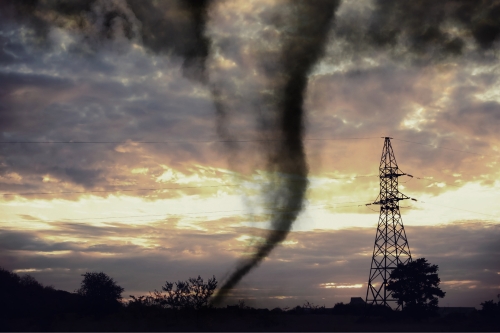Storms, whether hurricanes, blizzards, or severe thunderstorms, pose significant challenges to utility companies. Power outages, damaged infrastructure, and safety hazards are just a few of the issues that arise during these events. For utility providers, storm response preparation is critical to restoring services, ensuring public safety, and maintaining customer trust. A key component of any effective utility storm response plan is a resilient crew mobilization plan for storm response.
At Think Power Solutions, we specialize in helping utilities build these strategies. Our Crew Mobilization services are a core part of our storm response preparation for utilities, designed to support rapid, organized deployment in high-pressure situations.
Why Crew Mobilization Matters in Storm Response
Crew mobilization is the process of assembling, organizing, and deploying personnel to respond to a storm-related emergency. It involves coordinating workers, equipment, and resources to address outages, repair infrastructure, and ensure safety. A strong storm response crew mobilization plan can mean the difference between quick recovery and prolonged outages.
According to the U.S. Department of Energy, storms are the leading cause of power outages in the United States, with some events affecting millions of customers and costing billions in damages.
Without a resilient mobilization plan, utilities risk delays, miscommunication, and inefficiencies. Crews may be understaffed, lack necessary equipment, or be deployed to the wrong locations. These issues not only prolong outages but also increase safety risks for workers and the public. A resilient plan ensures that crews are prepared, equipped, and strategically positioned to respond effectively, minimizing downtime and maximizing safety.
Step 1: Assess Risks and Forecast Needs
The foundation of a resilient crew mobilization plan is a thorough risk assessment. Start by analyzing historical storm data for your service area to identify patterns, such as the frequency of hurricanes, ice storms, or high-wind events. Use weather forecasting tools and collaborate with meteorological experts to predict the likelihood and severity of upcoming storms.
Next, assess your infrastructure’s vulnerabilities. Are there aging power lines prone to failure? Are certain substations at risk of flooding? Mapping these vulnerabilities helps you anticipate where damage is most likely to occur and where crews will be needed most. For example, if a particular region has a history of downed lines due to high winds, you can prioritize pre-storm inspections in that area.
Finally, forecast your crew needs based on the scale of potential damage. Consider factors like the number of customers affected, the extent of infrastructure damage, and the duration of the outage. A small storm might require a handful of local crews, while a major hurricane could necessitate hundreds of workers, including mutual aid from other utilities. By forecasting needs, you can ensure you have enough personnel on standby without overcommitting resources.
Step 2: Build a Scalable Crew Structure
A resilient mobilization plan must be scalable to handle storms of varying intensity. Start by establishing a core team of local crews who are familiar with your service area and can respond immediately. This team should include linemen, technicians, and safety personnel trained in storm response protocols.
For larger storms, you’ll need to scale up by incorporating mutual aid crews from other utilities or contractors. Establish agreements with these partners well in advance, outlining roles, responsibilities, and compensation.
Organize your crews into specialized units based on their skills and the tasks they’ll perform. For instance, one unit might focus on clearing debris and downed lines, while another handles substation repairs. This specialization ensures that each team can work efficiently on their assigned tasks, reducing overlap and delays. Additionally, designate a reserve team that can be deployed as needed to address unexpected challenges, such as secondary outages or equipment failures.
Step 3: Pre-Position Resources and Equipment
Effective crew mobilization relies on having the right resources in the right place at the right time. Pre-positioning equipment and supplies before a storm hits can significantly reduce response times. Stockpile essential items like transformers, poles, wires, and personal protective equipment (PPE) in strategic locations across your service area. For example, if a hurricane is forecasted to make landfall in a specific region, move resources to nearby staging areas that are safe from flooding but close enough for quick deployment.
Ensure that all equipment is in good working condition by conducting pre-storm inspections. This includes checking vehicles, generators, and tools to avoid breakdowns during the response. At Think Power Solutions, we also recommend equipping crews with mobile technology, such as tablets with GIS mapping software, to help them navigate damaged areas and locate critical infrastructure. Pre-positioning also applies to personnel—consider staging crews in hotels or temporary shelters near high-risk areas so they can respond immediately after the storm passes.
Step 4: Establish Clear Communication Channels
Communication is the backbone of any successful mobilization plan. During a storm, communication networks may be disrupted, making it essential to have reliable, redundant systems in place. Use a combination of satellite phones, two-way radios, and mobile apps to ensure crews can stay in touch even if cell towers are down. For example, during Hurricane Sandy in 2012, many utilities relied on satellite communication to coordinate their response when traditional networks failed.
Create a centralized command center to oversee the response and serve as the hub for all communications. This center should be staffed with experienced coordinators who can relay information between crews, management, and external stakeholders like local governments and emergency services. Use a chain-of-command structure to streamline decision-making—each crew should have a designated leader who reports to the command center, ensuring that instructions are clear and consistent.
Regularly update crews on the storm’s progress, safety hazards, and changing priorities. For instance, if a new area experiences unexpected flooding, the command center should redirect crews to address the issue. Transparency is key—keeping crews informed reduces confusion and boosts morale, especially during long, grueling response efforts.
Step 5: Prioritize Safety and Training
Storm response is inherently dangerous, with risks like downed power lines, flooding, and falling debris posing threats to workers. A resilient mobilization plan must prioritize safety at every step. Start by ensuring that all crews, including mutual aid teams, are trained in storm response safety protocols. This includes training on how to handle live wires, work in adverse weather conditions, and use PPE effectively.
Conduct pre-storm safety briefings to review protocols and address any concerns. For example, remind crews to avoid working near waterlogged areas where hidden electrical hazards may exist. Provide mental health support as well—storm response can be physically and emotionally taxing, and offering resources like counseling can help workers cope with stress.
During the response, enforce strict safety standards. Require crews to work in pairs or teams to ensure mutual accountability, and mandate regular check-ins with the command center to confirm their safety. If conditions become too hazardous, such as during high winds or lightning, suspend operations until it’s safe to proceed. Safety isn’t just about protecting workers—it also ensures that the response effort isn’t derailed by preventable injuries.
Step 6: Test and Refine Your Plan
A mobilization plan is only as good as its execution, so regular testing is essential. Conduct tabletop exercises and simulations to walk through your plan and identify weaknesses. For example, simulate a scenario where a Category 3 hurricane causes widespread outages, and evaluate how quickly your crews can mobilize, communicate, and restore power. Involve all stakeholders, including mutual aid partners, to ensure everyone understands their role.
After each storm, conduct a post-event review to assess what worked and what didn’t. Did crews face delays due to poor resource positioning? Were there communication breakdowns? Use these insights to refine your plan, making it more resilient for the next event. For instance, if crews struggled to access a flooded area, consider investing in amphibious vehicles or partnering with local emergency services for support.
Conclusion
Building a resilient crew mobilization plan is a critical step in preparing for storm response. By assessing risks, building a scalable crew structure, pre-positioning resources, establishing clear communication, prioritizing safety, and testing your plan, you can ensure your utility is ready to tackle any storm. At Think Power Solutions, our Crew Mobilization is designed to help utilities like yours develop and execute effective storm response strategies, minimizing downtime and keeping communities safe.
As storm frequency and intensity continue to rise due to climate change, the need for robust preparedness has never been greater. Take the time now to strengthen your mobilization plan—your customers, crews, and community will thank you when the next storm hits. Contact us today!



